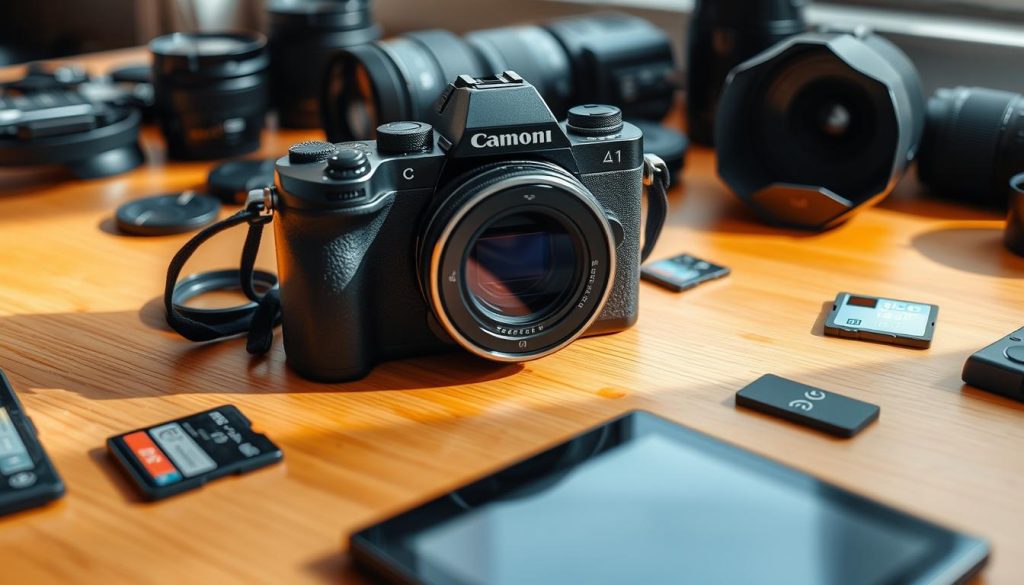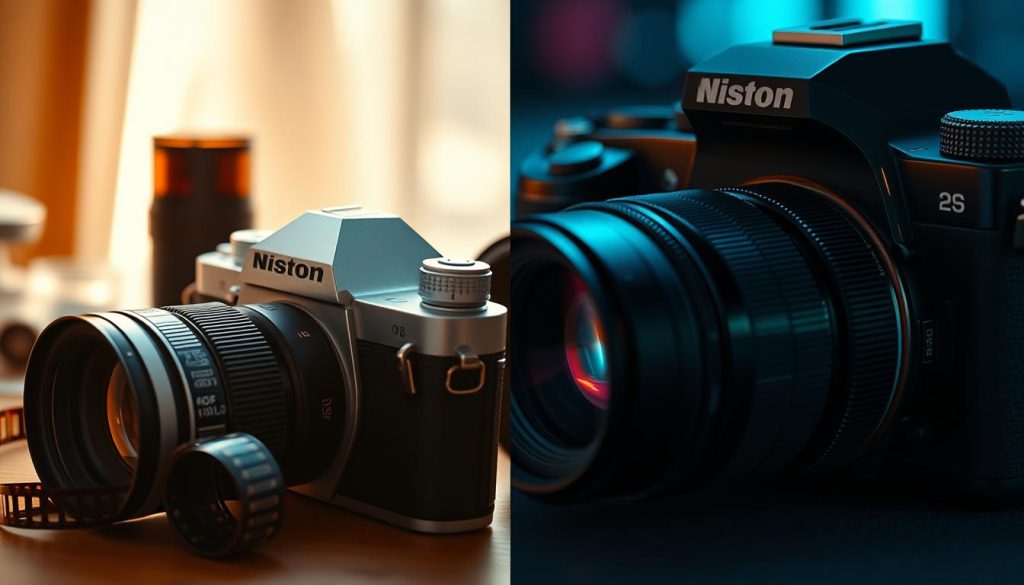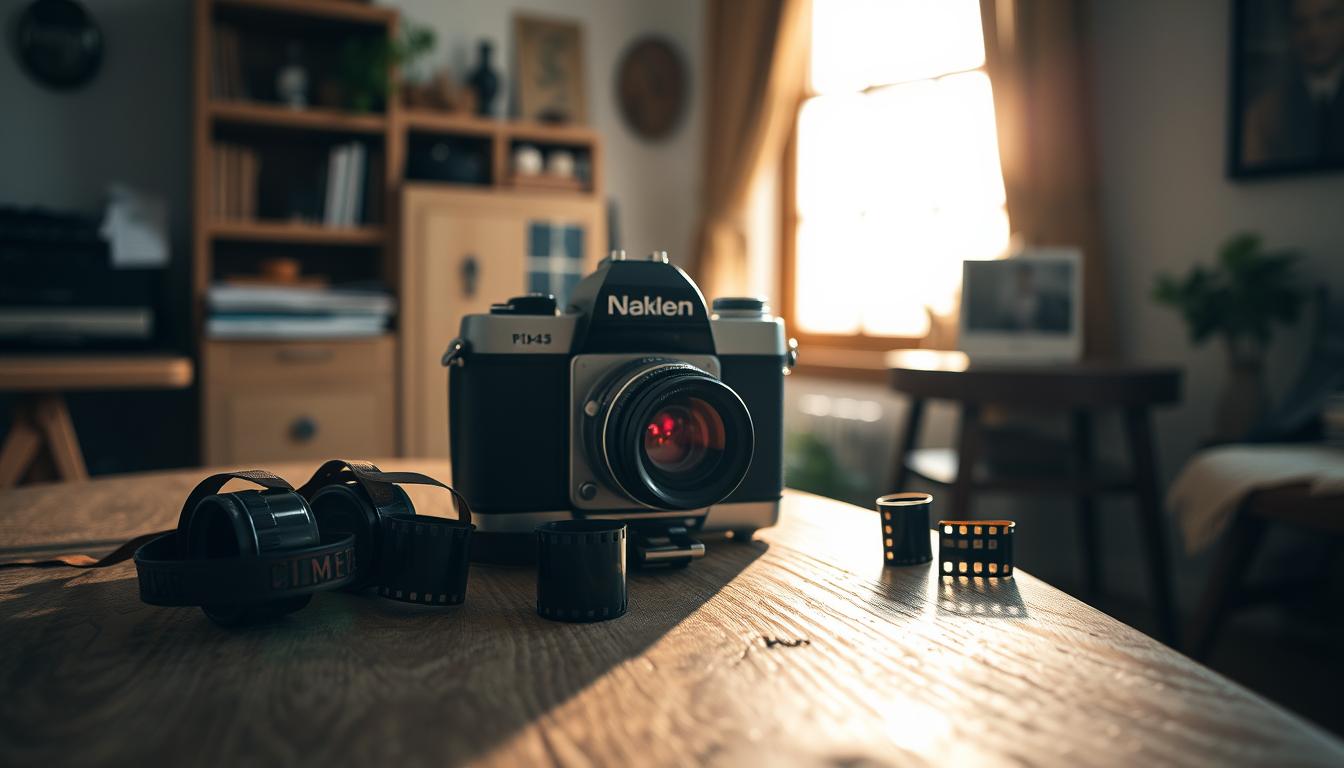I love photography and always wonder about film vs digital. Each has its own perks. This guide will show you the main differences. It will help you pick the right one for your style and needs.
We’ll look at film’s charm and digital’s ease. We’ll also talk about mixing both. By the end, you’ll know more about choosing your photography medium.
Exploring the Timeless Appeal of Film Photography
Film photography has a timeless charm that draws photographers worldwide. It offers a unique look that digital cameras can’t match. The click of a film camera and waiting to see negatives are key parts of this rewarding journey.
Capturing the Magic of Analog Photography
Film photography is hands-on, unlike digital cameras. It makes us slow down and think more about our shots. This leads to a deeper connection with our subjects and more meaningful photos.
The Art of Developing and Printing Film Negatives
Developing and printing negatives is a special part of film photography. It’s a hands-on process that brings photographers close to their work. This makes each print unique and full of character.
Film photography’s appeal is timeless. It offers a special look and a creative journey that inspires many. Whether you’re new or experienced, film photography is a rewarding and unique experience.
The Convenience and Versatility of Digital Cameras

In today’s world, photography has changed a lot. Digital cameras have made things easier and more flexible. As a pro photographer, I’ve seen how great digital photography and digital cameras are.
Digital cameras let you see your photos right away. You can change things up quickly to get the best shot. This saves time and makes sure your photos are perfect.
Also, editing software for digital photos is really good now. It helps us make our photos look amazing. We can change colors, add things, and more. This makes our photos look great.
Digital cameras also make storing photos easy. No more film rolls or darkrooms needed. We can save photos on cards or in the cloud. This makes it simple to keep and share our photos.
In short, digital cameras have changed photography a lot. They let us take, edit, and share photos easily. As a pro, I love the digital world and all it offers.
Film vs Digital Photography: Understanding the Key Differences

As a photographer, you might be unsure between film and digital cameras. Let’s look at the main differences. We’ll talk about image quality, resolution, cost, and workflow.
Image Quality and Resolution: A Comparison
Film photography has a special, organic look. Many find it captivating. The grain and texture of film add a unique character to photos.
Digital photography, on the other hand, offers clear and detailed images. High-resolution sensors capture stunning, crisp photos.
Cost and Workflow Considerations
Film photography costs more upfront. You need cameras, lenses, and film. Plus, there are expenses for developing and printing.
Digital photography is cheaper at first but costs more over time. You’ll need to spend on storage, software, and computer hardware. The digital workflow is faster and more flexible, letting you edit photos instantly.
| Feature | Film Photography | Digital Photography |
|---|---|---|
| Image Quality | Organic, unique grain and texture | Crisp, high-resolution detail |
| Resolution | Dependent on film format | Flexible and customizable |
| Cost | Higher upfront, ongoing film and processing expenses | Lower upfront, but recurring storage and software costs |
| Workflow | Slower, with physical film development and printing | Faster, with digital editing and instant review |
Choosing between film and digital photography depends on your vision, workflow, and budget. Knowing the differences helps you decide what fits your style and needs.
Embracing the Best of Both Worlds: Hybrid Shooting
Photographers looking for new ways to create can find joy in hybrid shooting. It mixes the strengths of film and digital photography. This lets you explore new ways to express your art.
Combining Film and Digital for Creative Expression
Hybrid photography lets you use film’s charm and digital’s flexibility. You can scan film negatives and add them to your digital photos. This mix creates unique and interesting images.
It doesn’t matter if you love film or digital. Hybrid shooting can make your photos better. Try different films, make prints, and then edit them digitally. You can do many things, like double exposures and advanced editing.

